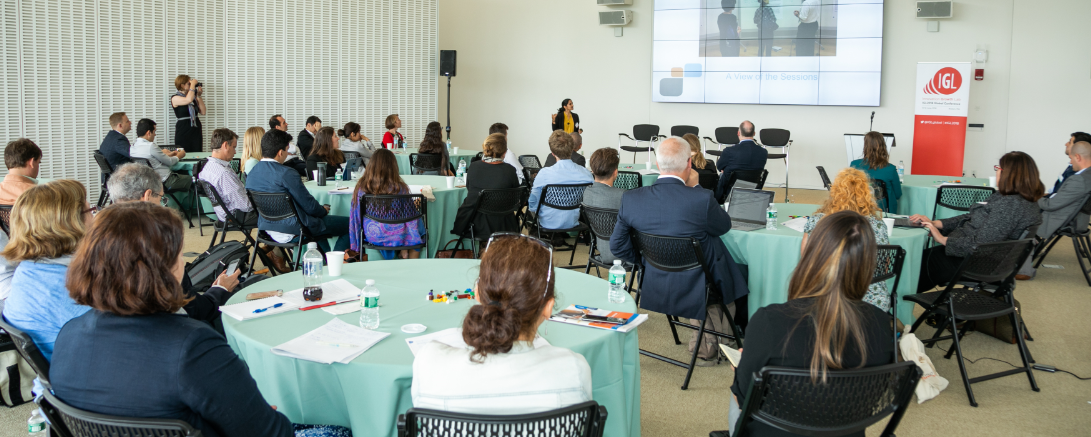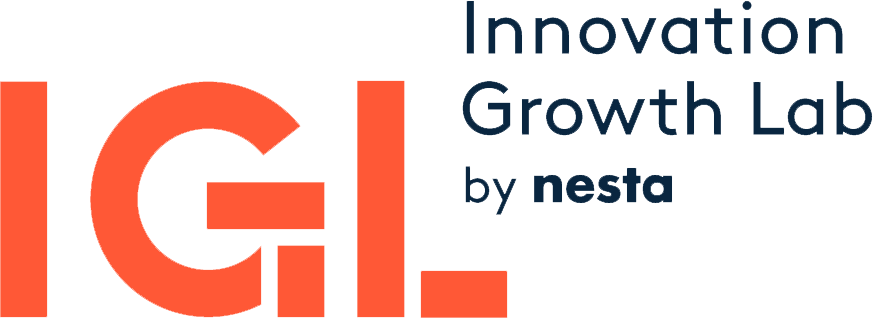
It’s difficult to summarise all the discussions at IGL2018 in Boston. With over 70 speakers, 10 keynotes and debates, 14 hand-on practical sessions, and participants from more than 20 countries, there was plenty of interesting conversations both on stage and during the breaks. Over the next few weeks we’ll be publishing a number of blogs discussing some of the conference sessions (and all the slides from the main conference days are available online). But here we would to share some of the messages that came out from the three days.
The widening boundaries of innovation policy
The traditional view of innovation policy involves policy makers in a business or research ministry tinkering with tax credits, R&D grants and different forms of business support. Yet the world has shifted, and so have the opportunities and tools that policy makers have at their disposal to improve their own countries’ innovation performance.
This message came across at a number of different sessions. MIT’s John Van Reenen’s thought-provoking presentation on the “Lost Einsteins” demonstrated how increasing exposure to innovation for children from underprivileged backgrounds could be a much more effective innovation policy than a new R&D tax credit or grant programme. If women, minorities, and low-income children invented at the same rate as high-income white men, we would have four times as many inventors.
Are policy makers in innovation ministries coordinating with their colleagues at education ministries? They probably should if they are not already (and here are some ideas). Otherwise at current rates we will have to wait 118 years to reach gender equality on invention, and miss innumerable inventions in the next century.
Similarly, we don’t typically think of regulators as engaging in innovation policy, even if it has long been recognised that their actions can create a more or less enabling environment for innovation. This is however changing, with regulators getting much more actively involved in setting and supporting innovation strategies. Two examples are the explosion in regulatory sandboxes showcased by Matt Homer from Future State, or the autonomous shipping testbeds shared by Eva Camerer from Innovation Norway.
Mission-driven approaches are also becoming more prominent, and with them comes a decentralisation of innovation policy towards other departments more closely involved with that particular challenge. It was fascinating to hear NASA’s Jenn Gustetic explain how the Asteroid Grand Challenge has used multi-disciplinary collaborations and innovative engagement mechanisms to find and address asteroid threats to human populations.
Whether they are recognised or not as innovation policy, these wider sets of tools can potentially have a much stronger impact on innovation than more traditional instruments, so policymakers ignore them at their peril.
The importance of ecosystems and the need to understand them
How to nurture entrepreneurship and innovation ecosystems was a recurring question over the three days of the conference. In one of the sessions we did hear the experiences of ecosystem builders from Barcelona, Medellin and Boston among others, with examples such as Barcelona’s Urban Lab showcasing how to successfully use the city and its challenges as a platform to accelerate innovation.
Ecosystems are more effective when complex and diverse. But how can we capture and interpret this complexity? MIT’s César Hidalgo and Katy Börner from Indiana showed how new data sources and methodologies that exploit “big data” could be applied to capture the complexity of national and local economies. But data on its own will be of little use if we fail to make it easier for policy makers to interrogate it and do not communicate its insights. In other words, we need a change and go from data as files, to data as stories and tools.
We also need to understand the new forms of ecosystems that are emerging in the virtual world. With falling communication costs and new open innovation platforms, new virtual communities of innovators are emerging. Topcoder CEO Mike Morris, GE Open Innovation Director Dyan Finkhousen and Deloitte’s Balaji Bondili discussed how these communities emerge, how they will be sustained and how they will reshape innovation. As one of them said, and the others agreed, platforms are the future. Yet as NASA’s Steve Rader said, transforming the culture of organisations to embrace innovation platforms it’s not an easy challenge, although he shared some lessons on how to do it.
Faster technology diffusion is key to addressing the productivity challenge
With the slowdown of productivity growth being so high in the policy agenda, we couldn’t avoid having a discussion on productivity at the conference, and it was a good one, chaired by William Maloney, Chief Economist at the World Bank. Chad Syverson from the University of Chicago dissected the potential causes of the slowdown, McKinsey’s Tera Allas showcased promising examples of policy responses, and WB’s Miriam Bruhn shared the results from some policy experiments to improve firm productivity.
There was consensus in the panel that accelerating the diffusion of new technologies and business practices is key to improve productivity growth, and as Chad Syverson pointed out, it will also be important to reap future benefits of areas such as AI.
An important challenge is that there are many gaps in the evidence on what works to accelerate diffusion. So it was great to be able to share during the conference the announcement that BEIS, one of the IGL partners, is launching a new experimentation fund to fund randomised trials that test different interventions to accelerate the adoption of new technologies and business practices.
The difficulties of measuring the speed of tech adoption in a consistent way across countries are also hampering the generation of evidence (and the development of interventions). In one of the many conversations during networking breaks we learnt of a new tech adoption survey instrument that one of the partners has been developing with the world leading experts in this field, and which they plan to rollout across three different countries. By the end of the conversation two other partner countries were interested in adopting the survey and pilot it in their own countries. Serendipitous interactions such as this one, and the collaborations they create, are one of the main benefits of attending the IGL conferences.
Policy experimentation can help find better solutions
To start the day, we did a quick show of hands with conference participants. A large majority of them design and run programmes and policies. Yet all of them believed their interventions were not perfect and could be improved (well, with one exception!). They all had questions on how best to run them and ideas on how to make them better. But very few of them had set up experiments to test out whether the changes would make their interventions better, or worse. Instead of de-risking the process by trialling them out at small scale, either the changes are not introduced, or they are rolled-out to everyone.
Karim Lakhani from HBS gave an inspiring keynote on the need to apply the scientific method to science policy. He presented a number of examples on how experiments could be used to make the scientific production function more efficient. For instance, a simple intervention to bring together scientists working under the same roof to talk about their ideas for a couple of hours creates new research collaborations that otherwise would not exist.
Throughout the conference we did hear many other examples of policy experiments, including teaching businesses to be experimental and overcoming gender gaps in entrepreneurship, and also of promising opportunities for experiments, for instance Sarah Weisberg’s inspiring Biobus story.
There is a growing number of trials in innovation and entrepreneurship policy, and many interesting lessons are starting to emerge. But running trials is not yet in the mainstream in this policy field, so J-PAL’s Executive Director Iqbal Dhaliwal shared the four ingredients they have used in their work with governments to institutionalise experimentation in the development field, which in contrast to ours is at the forefront of policy experimentation.
Join us at the IGL2019 conference in Berlin
This year’s conference is just over and we are already starting to prepare next year’s edition, which will take place in Berlin. If you are interested in attending, please register your interest here and you’ll be the first to know when dates are confirmed, the programme is available and registration opens.
Also, if you have an experience or project that you would like to share at next year’s conference, or have ideas about what themes, questions or speakers we should seek to include in the programme, please let us know. We are looking for novel policy ideas and initiatives, new policy experiments and evidence, and interesting capacity-building workshops.
At IGL we've worked with 12 partner governments from Australia to Norway to help them design trials; developed a range of online resources and capacity-building workshops to help policy makers become more experimental; and co-funded over 30 trials tackling questions such as how we get more and better ideas, and how we can support entrepreneurs and businesses to scale and adopt them. So if you would like to explore how to make your organisation more experimental, please email us.
With thanks to all the IGL2018 conference partners and supporters: the Laboratory for Innovation Science at Harvard, J-PAL, the Ewing Marion Kauffman Foundation, the World Bank Group, the Alfred P. Sloan Foundation, and the Global Entrepreneurship Research Network.


